Some tea imagery I noticed in a gay 90s submarine movie
The Hunt for Red October frames tea as an avatar of deception, betrayal, and the radical choice to trust one’s presumed enemy.
I’ve been on a big Dad Movie kick of late, which means, among other things: submarines, Sean Connery, and stern macho men showing bare glimpses of emotion. The Hunt for Red October (1990) has all three, starring Connery as Marko Ramius, the captain of an experimental Soviet submarine, the Red October, that’s nearly undetectable to sonar. Ramius and some of his officers want to defect to the United States, but their crew doesn’t know that. On the American side, a starry eyed Alec Baldwin plays Jack Ryan, a CIA analyst who’s studied Ramius for years. Baldwin realizes what Ramius is planning but doesn’t have hard proof, and if he’s wrong, he’ll have let a Soviet nuclear missle sub swim right up to his country’s front door. Can he convince the US Navy to trust his gut, and can Ramius slip past American and Soviet ships without sparking a mutiny from his enlisted men? Spoilers (and tea talk) ahead for this 35 year old movie in a special unpaywalled Leafhopper edition.
The Hunt for Red October is a triumph of dad cinema. And like director John McTiernan’s previous project, Predator, it’s intensely homoerotic. Connery and Baldwin have undeniable chemistry as complicated men who are understood better by each other than their compatriots. The film is unbothered by female distractions once the plot gets underway, and there’s a moment early on where the two leads must read each others’ intentions through Morse code and sonar pings with the subtlety of a cruising encounter.
There’s also a lot of interesting tea imagery. I always look for tea in movies; it often reveals character traits during quiet moments and gives actors something to do with their hands. Cinematographer Jan de Bont luxuriates on opulent Russian tea sets in the film, and tea even factors into a dramatic plot point. When I compared those shots to the brisk, functional way coffee is depicted on the American side I started wondering if tea had a bigger role to play in the story. The Hunt for Red October is game of wits, but unlike so many Cold War films, it’s about calculated empathy to deceive one’s adversaries while reading your enemy so well he can become your friend. Tea kept showing up at moments of tension and pulsing camraderie in the film, so let’s see how the drink illuminates Red October’s themes of deception, betrayal, and radical trust.
We begin with Jack Ryan on American soil, so coffee is the drink of choice. Vice Admiral Greer, Ryan’s boss played by James Earl Jones, makes Ryan a cup of coffee with milk and sugar, as requested. We barely see real coffee in the cup, likely for continuity purposes—filmmakers frequently use opaque cups so we don’t notice varying levels of liquid between takes. Ryan takes a mere two sips during the scene and the cup is quick to leave the frame. Like the Tom Clancy novel Red October is based on, the American military spy complex moves quickly and to the point, just like its chosen beverage.
Now look at this stunning tea service on Red October! There’s an art deco pot in the back, a sugar dish, a bowl of sliced lemons, and a Russian style glass in a silver cradle. What luxury on a military vessel! Here Ramius is confronted by the suspicious captain Putin, the ship’s political officer and a Kremlin loyalist. I enjoy thinking about Putin carefully laying out this teaware for a moment of candor with Ramius, while he reminds the skipper that Ramius may command the ship, but Putin speaks for the USSR.
Unlike the American coffee cups, this tea is on full display. Putin’s not in on the defection plan, so Ramius has to make sure he won’t interfere.
Ramius slams Putin’s head against the table…
…then spills tea on the floor to concoct a ruse that Putin slipped on his drink and cracked his skull in a tragic accident. “Where I am going, you cannot follow,” Ramius whispers to the dying man.
I should also note this is the scene where the Red October’s crew transition from speaking Russian to English. It’s over a tea table where we first learn how far Ramius is willing to go for his risky gambit.
The next tea scene occurs in Moscow. A superior of Ramius opens a letter from the captain while an attendant dutifully stirs sugar into his tea. Note the ornate tea service—it’s decorated with more detail than the wares on Red October, but not by much. Did you know that Russians consume about 3 pounds of tea each year? That’s just below Iranians and Pakistanis and only a pound less than the English.
This admiral is expecting to read a commiqué from an old friend. He holds his cup while scanning the first few lines, then places it down somberly when he realizes that Ramius has written him a farewell letter, saying he plans to defect. The admiral can’t bring himself to drink in this moment of betrayal, and in response, he sends practically the full Soviet fleet to stop Ramius in the Atlantic. Ramius plays this off to his unsuspecting crew as a series of war games that Red October will play against its comrades.
Back to the captain’s dining room on Red October. Tea is on the table once again. We get a closer look at the teapot here. It’s beautiful, yet so impractical on a ship where any unsecured object can be a health hazard. Imagine getting beaned by this thing during evasive maneuvers. The fact that it’s allowed onboard shows us how much tea matters to this crew as a source of comfort during underwater fights to the death.
The officers don’t buy Ramius’s ruse about Putin’s death by tea. They’re also horrified to learn that Ramius has informed his superiors about his plans to defect. Ramius admits that even if everything goes right, he gives them one in three odds of pulling off their covert defection. Then, with classic Connery menace he asks, “more tea anyone?” He’s asking them to trust him, but also warning that if anyone steps out of line, they might meet Putin’s fate.
There’s a blink-and-you’ll-miss-it shot of tea being served on Red October’s bridge. It’s poured from a more utilitarian urn, I’m guessing made out of pewter, into simple ceramic cups. The crew think Red October is on maneuvers through a difficult-to-navigate trench. In reality, Ramius has ordered the ship into dangerous waters to avoid the Soviet subs on his tail.
There’s a side plot with the American president and the Soviet ambassador, pictured here in the White House. The Americans know a sub is on the loose and the Soviets know they know, but are desperate to hide the embarassing truth that Ramius is defecting. So Ramius’s lie becomes the ambassador’s: the Soviets aren’t mobilizing for war, they’re doing training maneuvers! It’s a delicious game of bullshitting a bullshitter over cups of tea or coffee—we can’t see which.
The president’s not buying it. We hear a gentle clink as the ambassador places the cup on his saucer. He leans back and his face turns grave. He admits his fleet has “lost” one of their submarines. It’s almost as if the teacup functioned as dialectical armor for his rhetorical jabs and parries. Only when he puts it down does he start speaking closer to the truth.
I love this scene in the captain’s bunk between Ramius and his first officer, Vasily Borodin, played by Sam Neil using his worst Russian accent. We learn a lot in just a few minutes.
Thanks to Jack Ryan’s earlier detective work, we know that Ramius plans to fake a nuclear reactor leak as a ruse to evacuate his crew so they can be rescued by the Soviet fleet. It’s clear this is one of the reasons Ramius informed his commanders about his defection. He doesn’t want his crew dead—in fact he needs them alive so they can think he and his officers went down with their ship. Here we see a map where Ramius is plotting Red October’s escape route with another cup of tea. He doesn’t drink in this scene, but we can imagine him poring over protractors with cup in hand, the weight of a possible nuclear war on his shoulders.
Borodin wants to live in Montana with a round American wife who will cook him rabbits that they raise together. We get a tender moment between the two sailors; it’s obvious they have history and trust each other implicitly, but their nerves are frayed. It’s a rare chance to see them with their guards down.
The exchange ends with this Dutch angle panning shot from Borodin to the teacup on the table. It’s previewing a maneuver we learn about in the next scene, a “crazy Ivan,” which is a Soviet submarine tactic to make a sudden hard angle turn to see if any pursuers are following in the ship’s wake.
It’s a wise call. The Red October is being pursued by Dallas, an American sub commanded by Bart Mancuso. Sonar operator Jonesey recognizes the move and alerts Mancuso to cut engines so they won’t be discovered. I love how quickly this movie jumps between trust and deception, as if they’re two sides of the same coin. Tea acts as the avatar of both and the transition between the two.
I like Mancuso. He’s not a tea drinker, but Scott Glen plays him as a no-nonsense soldier trying to do the right thing without sparking WWIII. He’s annoyed at his need to wear reading glasses, a sign that he, like Ramius, has spent too many of his good years at sea fighting someone else’s wars. We’ll get back to him in a minute.
That’s pretty much all the tea we get as the movie ramps up to its final act. Ryan has boarded Dallas and found a way to secretly arrange a rendez vous with Ramius. Red October has its “reactor breach” and Ramius deputizes the ship’s doctor, a goofy Tim Curry not in on the defection plan, to lead the crew to liferafts until they can be rescued. The crew wind up thinking Ramius defeats the pursuing American sub in a battle to the death and laud him as a hero. Meanwhile, a delegation from Dallas boards Red October and Ryan and Ramius finally meet face to face.
There’s a plot-moving Soviet sabateur on board who shoots and kills Borodin. At the same time, another Soviet sub captained by a young Stellan Skarsgård chases the renegade vessel. Ramius and Ryan take off to hunt down the sabateur before he can launch the sub’s nukes. Without a first officer, Ramius has Mancuso, the American commander, take the conn—a moment of radical trust so ballsy I’m amazed it’s so brief. The film is pure competency porn at this point. Red October’s officers readily follow Mancuso’s commands, Jonesey mans the sonar station, and with Dallas’s aid, Mancuso helps them redirect a torpedo from Skarsgård’s sub to turn back and detonate its point of origin. Red October makes it to American waters and our heroes share a moment of reflection above a river’s calm waters. I only wish they kissed.
So what is tea in The Hunt for Red October? It’s a taste of home for Russian sailors who’ve devoted their lives to the deep. It’s a welcome gesture and the sheep’s clothing for an encounter with a wolf. It’s a pretext for murder, a request for trust, and a warning of the consequences of betrayal. Tea appears in the film at key moments of deception: jockeying between the president and Soviet ambassador, on Red October’s bridge while Ramius pulls one over on his crew, and in the heart of Moscow when a military leader learns one of his worst fears has come true. But we also see tea during vulnerable moments between soldiers who are weary of violence and who wish to pursue something more courageous: peace. The Hunt for Red October illustrates the slim divide between masculine ideals of nuclear annihilation and finding a new bunk buddy. We see which choice our heroes make. Are we brave enough to follow their lead?
Thanks for reading this special Leafhopper edition. If you’d like to receive future deep dives like this one, upgrade your subscription. You can also get a taste with a 7-day free trial. Readers can donate a subscription or give someone special a gift subscription.





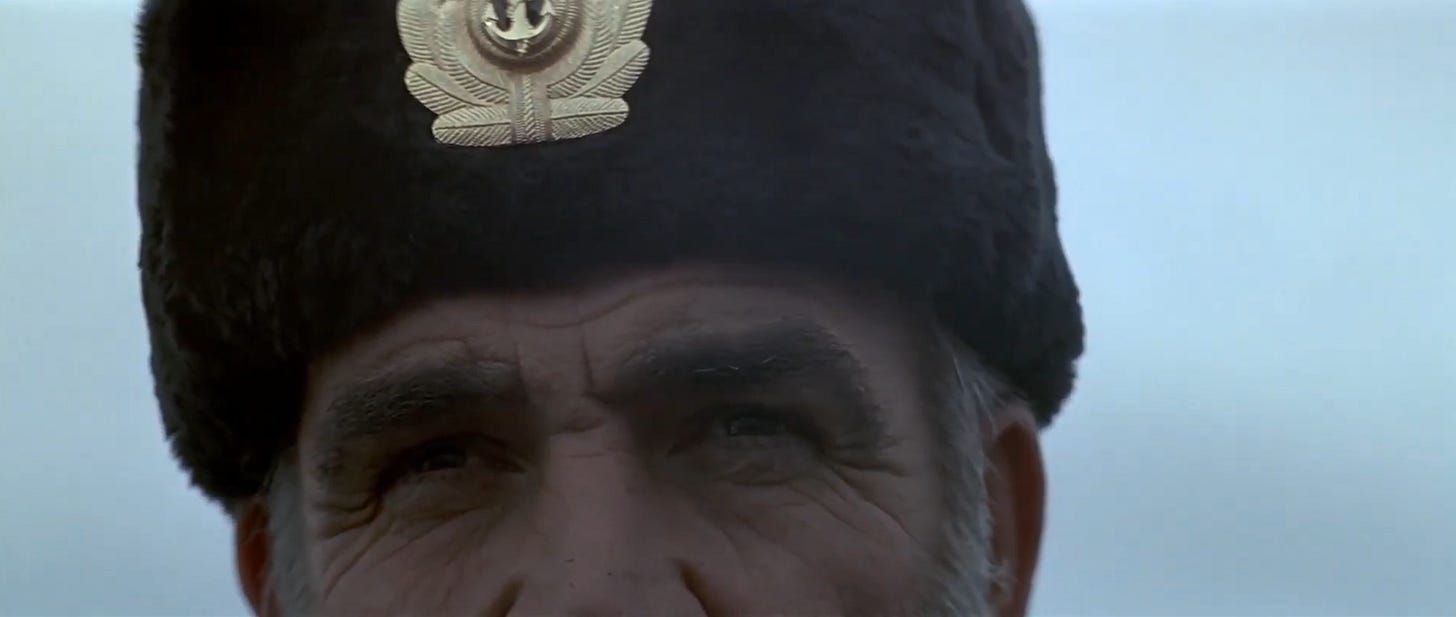
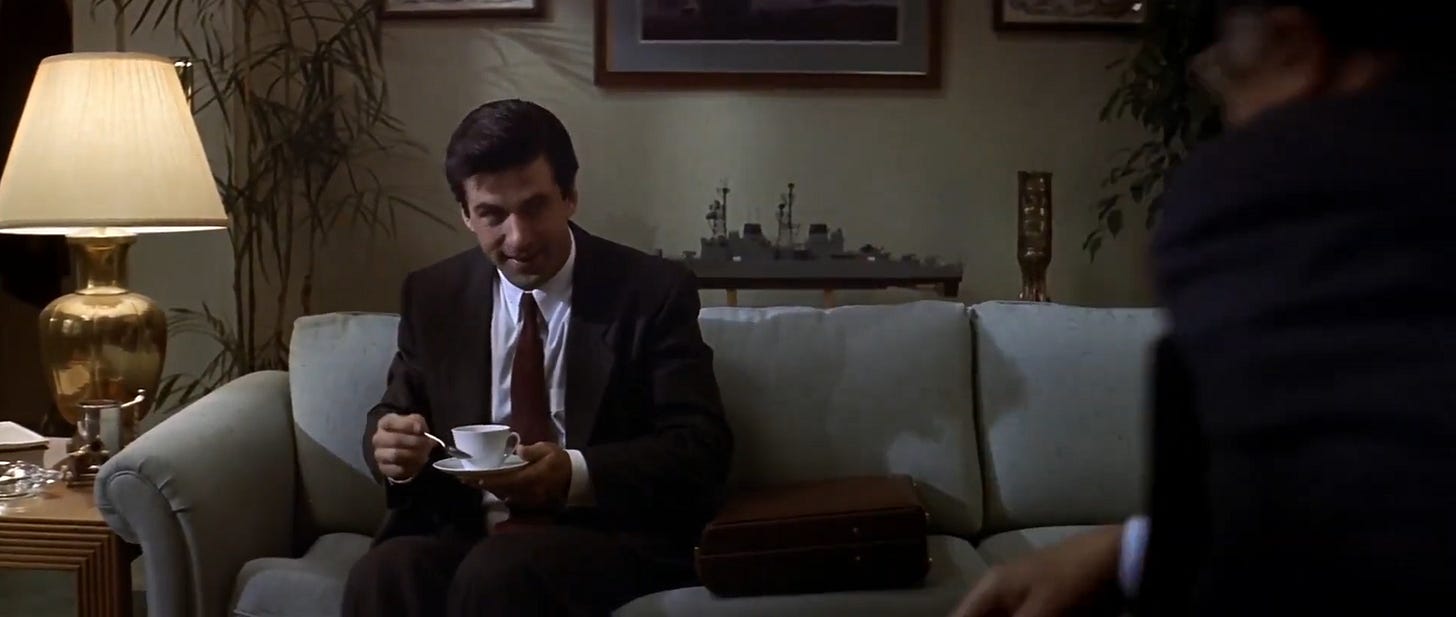






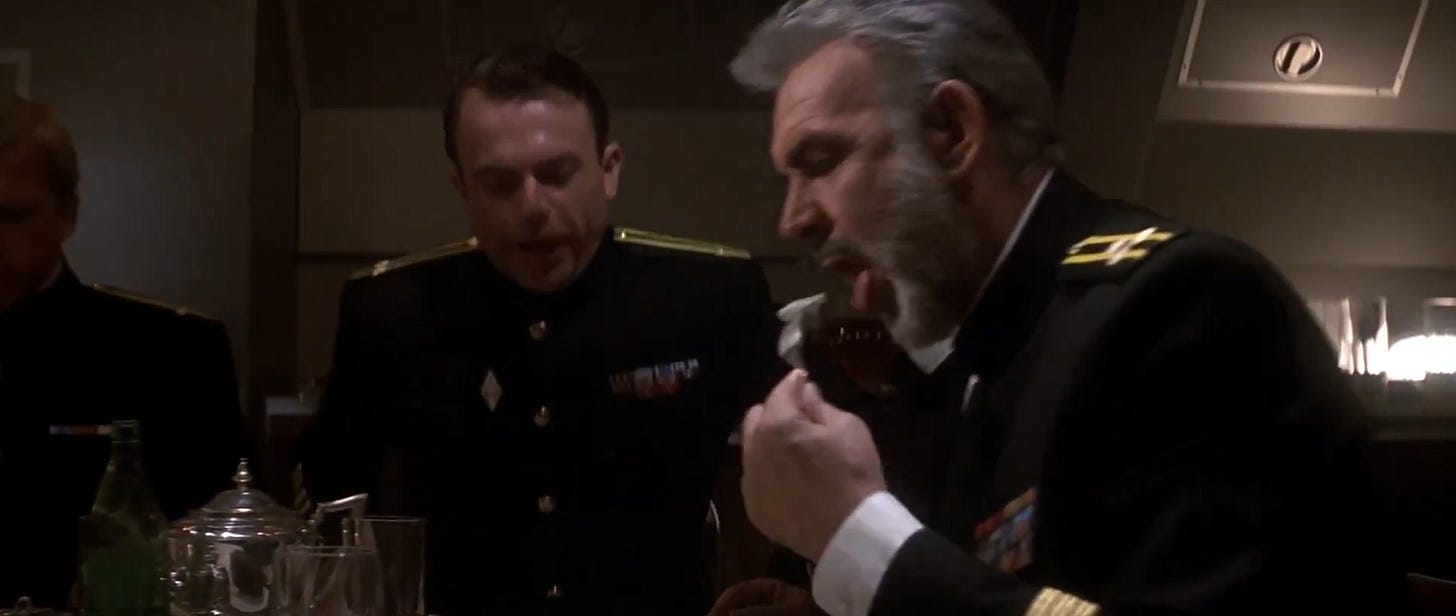




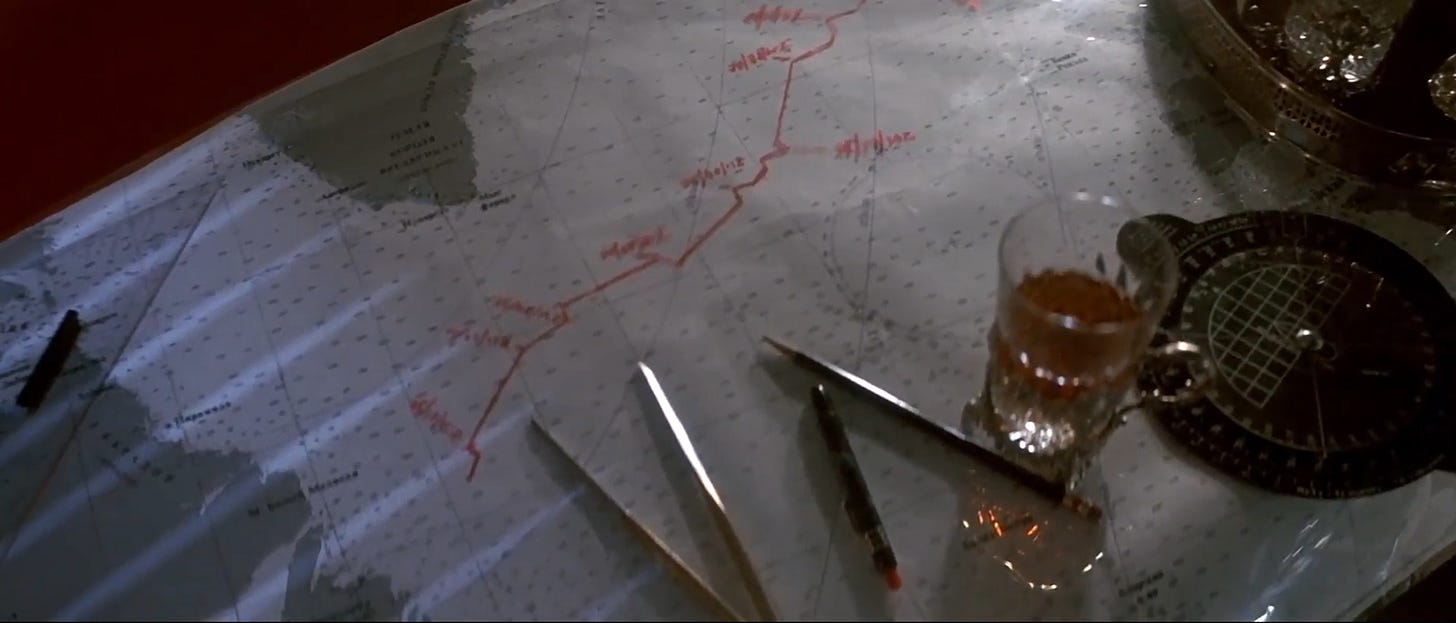
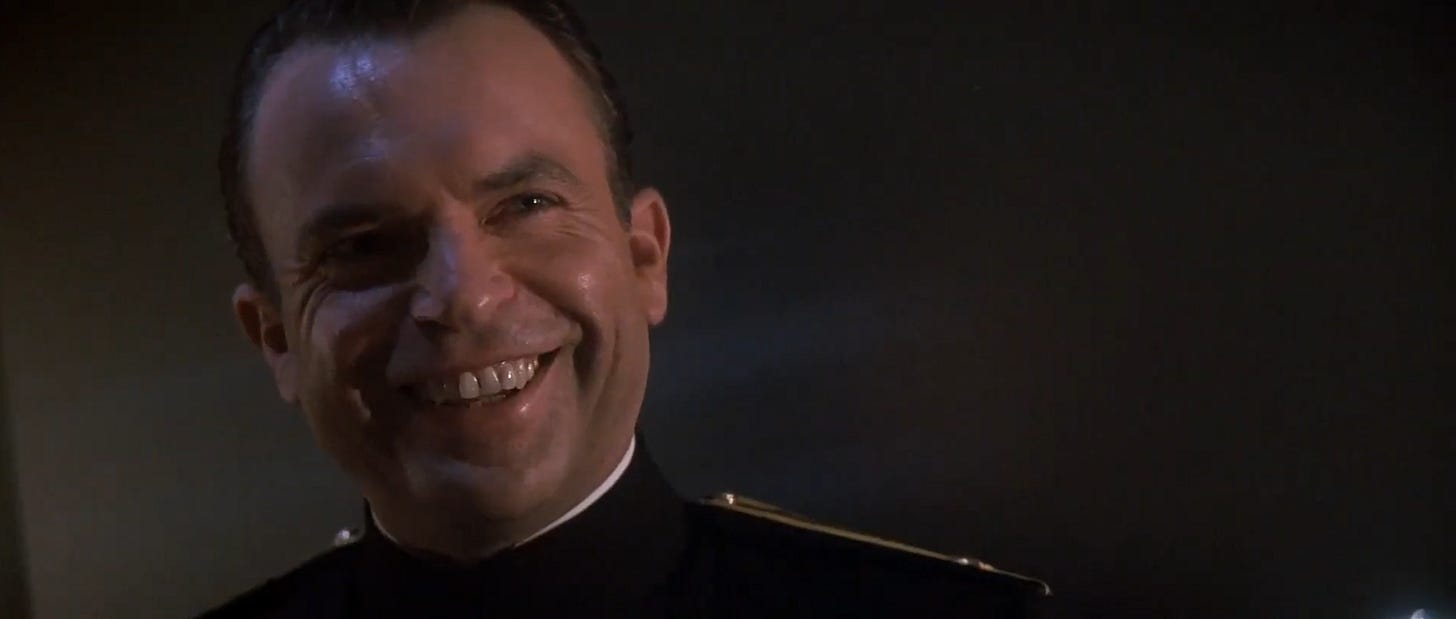


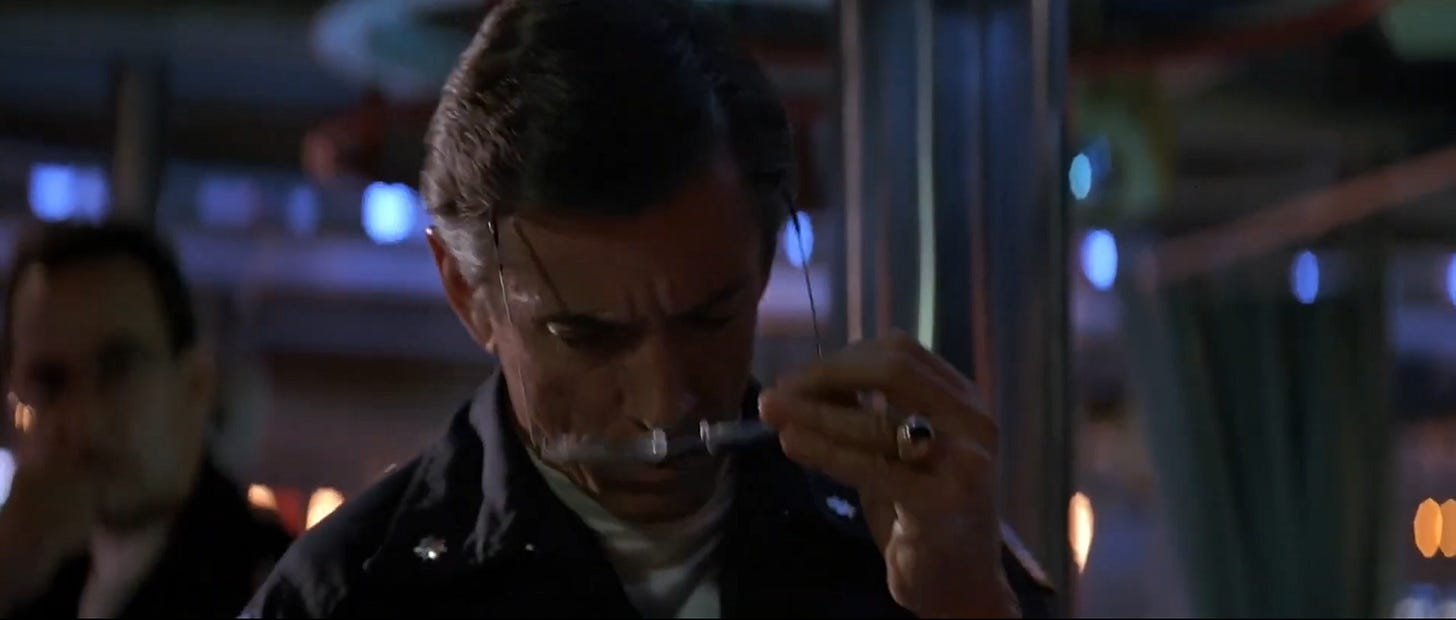


We are!
This really was fun and I must now watch the movie 😄 Doomed to forever keep a closer eye on tea as storytelling in future films!
Such an unexpected article, Max! I loved it.